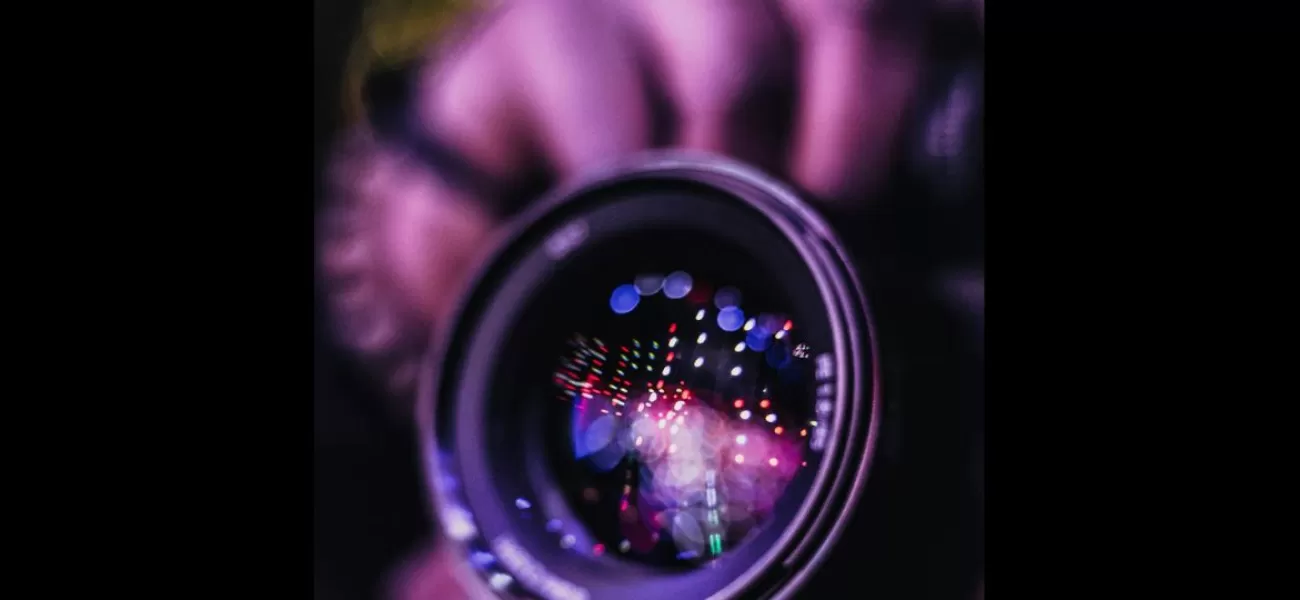David Johnson, a pioneering photographer from San Francisco, has passed away at the age of 97.
Johnson's photos captured the struggles and experiences of Black individuals as they fought for civil rights, making his work highly important.
March 18th 2024.

David Johnson was a talented photographer who made history as the first Black student to study under the renowned Ansel Adams. Sadly, he passed away in March at the age of 97, after battling advanced dementia and pneumonia. His stepdaughter shared the news with NPR, and it was a loss felt by many in the photography world. Johnson's legacy lives on through his groundbreaking work and the impact he had on documenting the lives of Black people during the struggle for civil rights.
In 2016, Johnson made history once again when his archive became the first by a Black photographer to be displayed at the prestigious Bancroft Library. His photography provided a unique and poignant perspective on the Black community, and it was recognized by many, including Jack Von Euw, who described it as "one of the best documentaries" he had ever seen. Johnson's ability to capture candid moments of his subjects added an authentic and powerful element to his work.
Johnson's love for photography began long before he became a student of Adams. He stumbled upon an article about the California School of Fine Arts starting a photography program under the direction of Adams, and it piqued his interest. Johnson had recently returned from serving in the U.S. Navy and was looking for a new path. He reached out to Adams, expressing his interest in the program and revealing, "By the way, I'm a Negro." Initially, there was no space for him, but Adams later sent a telegram offering him a spot.
Coming from Jacksonville, Florida, Johnson did not have any formal training in photography. However, he had a burning desire to learn and succeed. His professors, including Adams and Minor White, made him feel welcome from the start. Adams even provided him with a place to stay until Johnson could afford his own place. White also surprised Johnson with a new camera after seeing his old one, a gesture that meant a lot to Johnson and showed the support and belief his professors had in him.
After moving out of Adams' home, Johnson settled in San Francisco's Fillmore district, where he became a part of the Black community that had formed there after World War II. His neighbors and friends also became his subjects, and Johnson's favorite image, "Clarence," captures a young Black boy sitting on the steps of a church. Johnson saw himself in the boy, as they both shared a similar upbringing. Johnson was raised by a relative and felt a connection to the boy's innocence and vulnerability.
While Johnson's work often focused on everyday life and the Black community, he also had the opportunity to photograph notable figures such as Supreme Court Justice Thurgood Marshall, Nat King Cole, Langston Hughes, Eartha Kitt, and Jackie Robinson. His camera also captured powerful moments such as the March on Washington, adding to the historical significance of his work.
Reflecting on Johnson's life, Von Euw noted that he was a shining example of Black individuals in his generation, who were able to overcome limitations and create something remarkable. Despite the obstacles he faced, Johnson had the will, vision, and perseverance to transform his life and leave a lasting legacy through his photography. His story is a testament to the strength and resilience of the Black community, and his work continues to inspire and educate others.
In 2016, Johnson made history once again when his archive became the first by a Black photographer to be displayed at the prestigious Bancroft Library. His photography provided a unique and poignant perspective on the Black community, and it was recognized by many, including Jack Von Euw, who described it as "one of the best documentaries" he had ever seen. Johnson's ability to capture candid moments of his subjects added an authentic and powerful element to his work.
Johnson's love for photography began long before he became a student of Adams. He stumbled upon an article about the California School of Fine Arts starting a photography program under the direction of Adams, and it piqued his interest. Johnson had recently returned from serving in the U.S. Navy and was looking for a new path. He reached out to Adams, expressing his interest in the program and revealing, "By the way, I'm a Negro." Initially, there was no space for him, but Adams later sent a telegram offering him a spot.
Coming from Jacksonville, Florida, Johnson did not have any formal training in photography. However, he had a burning desire to learn and succeed. His professors, including Adams and Minor White, made him feel welcome from the start. Adams even provided him with a place to stay until Johnson could afford his own place. White also surprised Johnson with a new camera after seeing his old one, a gesture that meant a lot to Johnson and showed the support and belief his professors had in him.
After moving out of Adams' home, Johnson settled in San Francisco's Fillmore district, where he became a part of the Black community that had formed there after World War II. His neighbors and friends also became his subjects, and Johnson's favorite image, "Clarence," captures a young Black boy sitting on the steps of a church. Johnson saw himself in the boy, as they both shared a similar upbringing. Johnson was raised by a relative and felt a connection to the boy's innocence and vulnerability.
While Johnson's work often focused on everyday life and the Black community, he also had the opportunity to photograph notable figures such as Supreme Court Justice Thurgood Marshall, Nat King Cole, Langston Hughes, Eartha Kitt, and Jackie Robinson. His camera also captured powerful moments such as the March on Washington, adding to the historical significance of his work.
Reflecting on Johnson's life, Von Euw noted that he was a shining example of Black individuals in his generation, who were able to overcome limitations and create something remarkable. Despite the obstacles he faced, Johnson had the will, vision, and perseverance to transform his life and leave a lasting legacy through his photography. His story is a testament to the strength and resilience of the Black community, and his work continues to inspire and educate others.
[This article has been trending online recently and has been generated with AI. Your feed is customized.]
[Generative AI is experimental.]
0
0
Submit Comment





